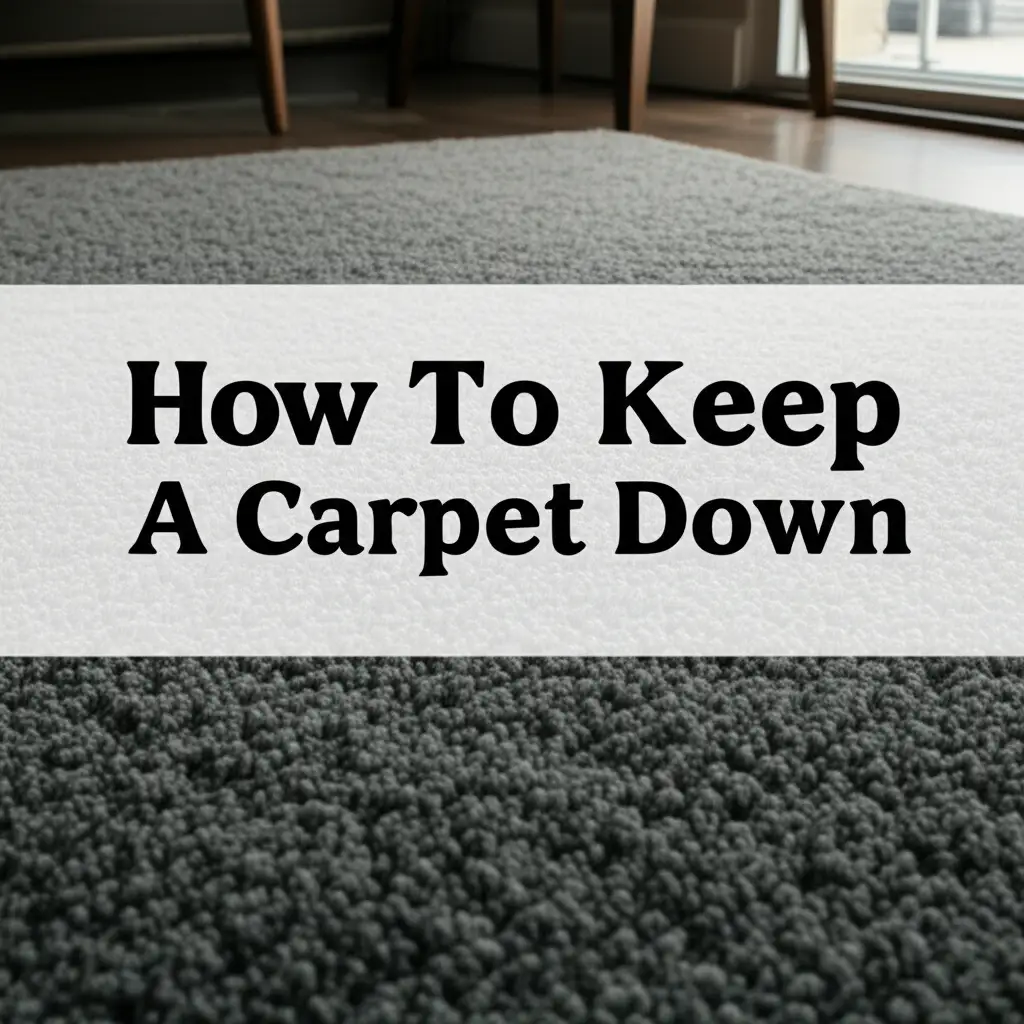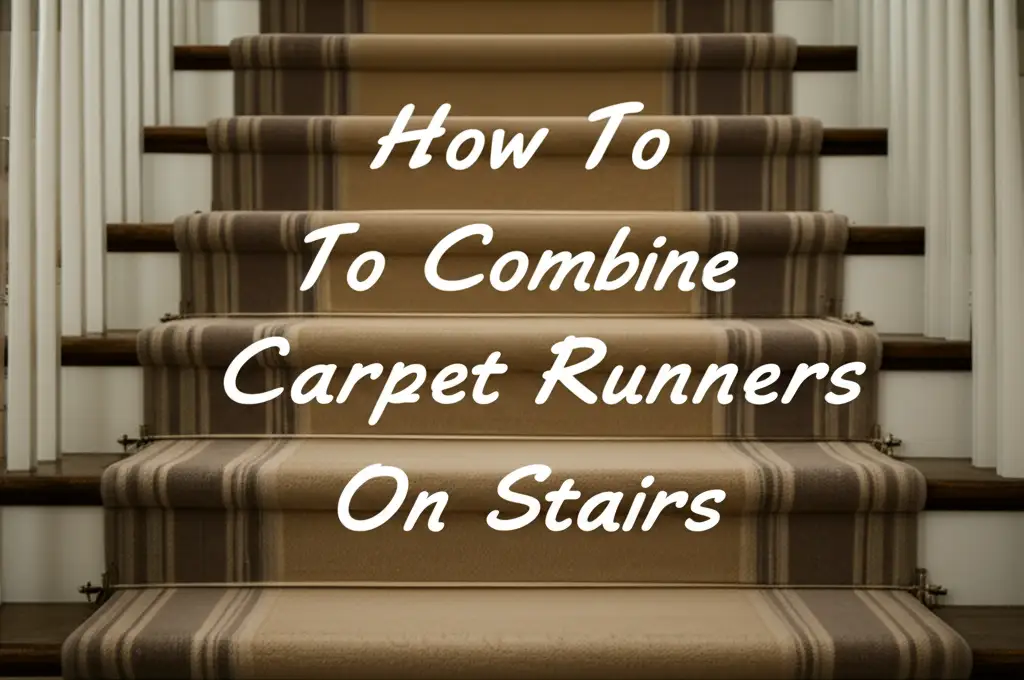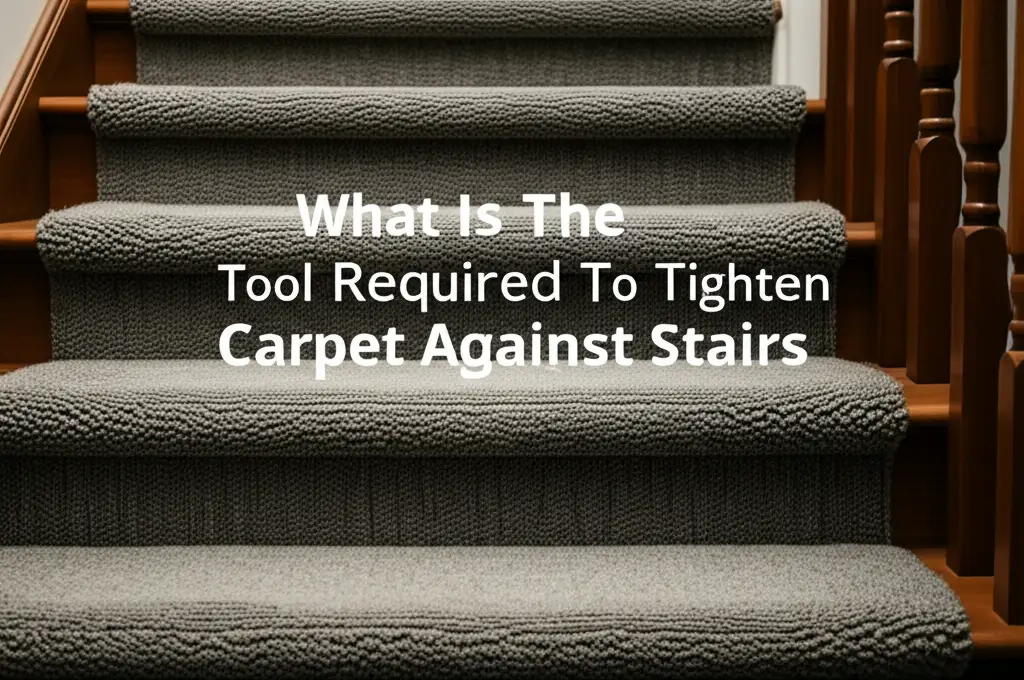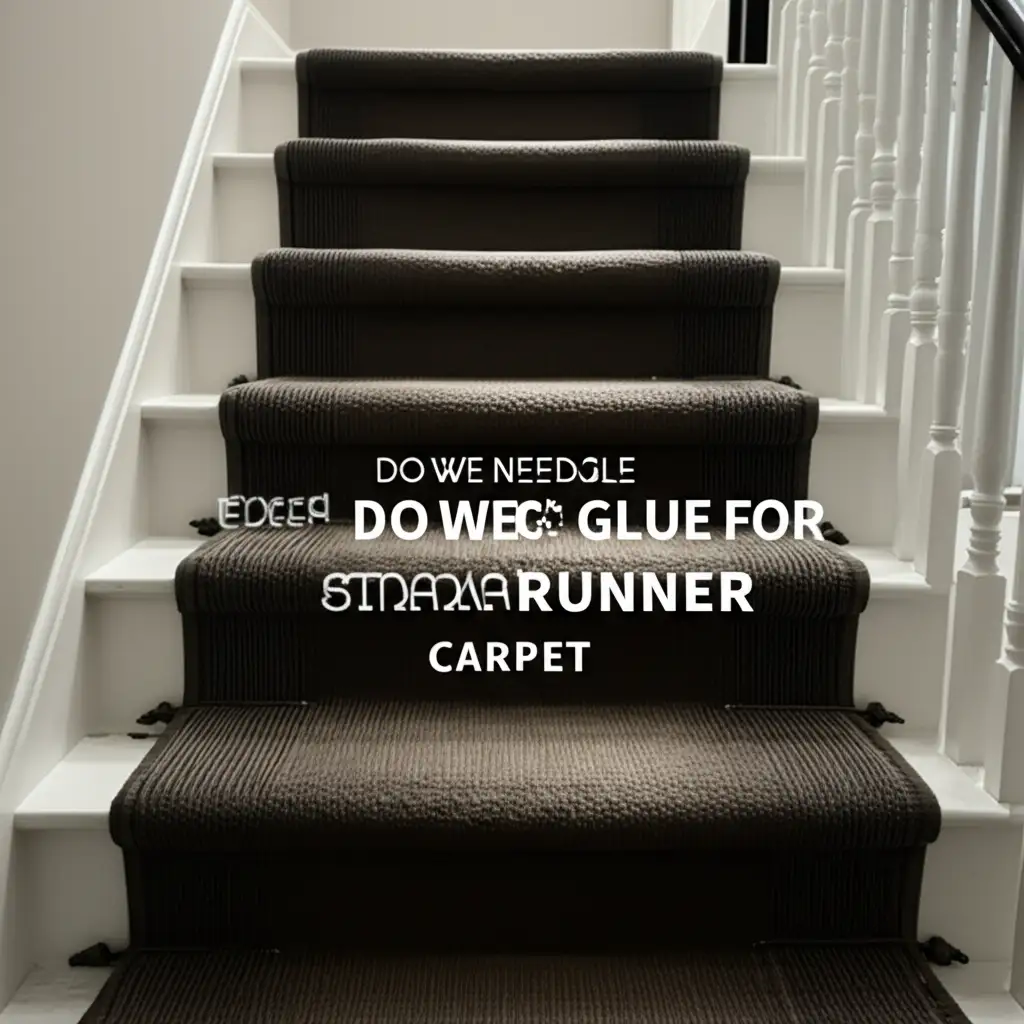· Tessa Winslow · Home Improvement · 11 min read
How To Keep A Carpet Down

Keep Your Carpet Secure: How To Keep A Carpet Down Effectively
Have you ever walked across your room only to feel your carpet shift underfoot? A slipping carpet is not just annoying; it creates a real tripping hazard for everyone in your home. Keeping your carpet down firmly makes your space safer and look tidier. Loose carpets can also wear out faster, as constant movement causes friction and damage to the fibers and backing. We want your floors to be stable and beautiful for a long time.
This article will guide you through effective strategies to secure any carpet, whether it is a room-sized installation or a smaller area rug. We will cover everything from understanding why carpets move to using specialized tools and materials. You will learn about different pads, adhesives, and professional techniques. My goal is to help you create a safer, more inviting home environment.
Takeaway:
- Secure carpets improve home safety and aesthetics.
- Carpet pads and non-slip backings prevent movement.
- Adhesives and tack strips offer permanent installation.
- Regular maintenance keeps carpets stable.
- Proper tools make carpet securing tasks easier.
To keep a carpet down, use methods like non-slip rug pads for area rugs, or double-sided carpet tape for smaller sections. For wall-to-wall carpets, professional installation using tack strips and stretching is essential. Always ensure your subfloor is clean and dry before any installation.
Understanding Why Carpets Move: Common Causes
Carpets can start to move for several reasons, making them a nuisance or even a safety risk. Knowing why your carpet is shifting helps you choose the right solution. One common cause is simply the lack of proper underlayment or inadequate installation. If the carpet was not stretched correctly during installation, it might loosen over time.
High traffic areas also contribute to carpet movement. Constant walking, running, or furniture rearrangement can gradually push the carpet out of place. This is especially true for area rugs on smooth floors like hardwood or tile. Without something to grip the floor, they will slide easily.
Environmental factors also play a role. Humidity changes can cause carpets to expand and contract slightly, leading to ripples or bubbles. This is more noticeable in larger, wall-to-wall installations. Pets running around or kids playing can also cause smaller rugs to slide around the room. We need to address these issues to keep your carpet firmly in place.
Essential Tools and Materials for Carpet Securing
Securing a carpet effectively often requires specific tools and materials. Having the right supplies on hand makes the job much easier and ensures a lasting solution. For small area rugs, you might only need a good non-slip rug pad. These pads sit between the rug and the floor, providing a strong grip.
For larger areas or wall-to-wall carpeting, you will need more specialized items. A power stretcher is critical for tightening wall-to-wall carpets. This tool stretches the carpet evenly to remove wrinkles and secure it to tack strips. A knee kicker helps position the carpet initially, especially in corners or edges.
Other useful materials include carpet tape, which is a strong, double-sided adhesive tape designed for carpets. For more permanent installations, carpet adhesive or glues are used, especially for commercial carpets or specific residential applications. You will also need utility knives for trimming carpet edges and a seaming iron if you are joining carpet pieces. Always prepare your subfloor by cleaning it thoroughly before laying any materials.
Using Carpet Pads and Underlays for Stability
Carpet pads, also known as underlays, are a fantastic solution for keeping area rugs from slipping. They add a layer of cushioning under your rug, making it feel softer underfoot. This cushioning also absorbs impact, which extends the life of your rug by reducing wear and tear. But their primary function for this discussion is preventing movement.
Non-slip rug pads are designed with materials that grip both the rug and the floor. Some are made of natural rubber, while others use PVC or felt. Rubber pads offer excellent grip and are durable. Felt pads provide more cushioning and insulation but might need a rubber backing to prevent slipping. Choose a pad that matches the size of your rug, or trim it slightly smaller than the rug’s edge.
For wall-to-wall carpet installations, the underlayment serves a similar purpose. It provides cushioning, insulation, and helps the carpet feel more luxurious. A good underlay also protects the carpet backing from direct contact with the subfloor. This prevents premature wear and tear. It also helps with acoustic insulation, reducing noise in the room. This base layer is fundamental for overall carpet stability and longevity.
Effective Adhesives and Tapes for Permanent Solutions
When you need a more permanent solution to keep a carpet down, adhesives and specialized tapes are excellent choices. These methods are often used for wall-to-wall installations or for securing carpet tiles. Carpet tape is a strong, double-sided adhesive tape. You can apply it to the perimeter of an area rug or underneath carpet runners to stop them from sliding. It is easy to use and provides immediate results.
For full room installations or for carpet tiles, carpet adhesive is the standard. This is a powerful glue spread directly onto the subfloor before the carpet is laid. The adhesive creates a strong bond, holding the carpet firmly in place. Different adhesives are available for various carpet types and subfloor materials. Always read the product instructions carefully to ensure proper application and drying times.
Another option for securing carpet edges or seams is seaming tape. This tape, often used with a seaming iron, creates a strong, invisible bond between two pieces of carpet. It prevents edges from curling up or separating. Before applying any adhesive or tape, make sure your subfloor is clean, dry, and free of debris. A well-prepared surface ensures the best possible bond. If you’re considering removing old flooring before a new carpet installation, understanding how to take the carpet out of tile floor can be helpful for proper subfloor preparation.
Tack Strips and Grippers: Professional Installation Techniques
For wall-to-wall carpet, professional installers rely on tack strips and carpet grippers. These are strips of wood or plastic with sharp tacks pointing upwards. Installers nail or glue these strips around the perimeter of the room, just slightly away from the walls. The tacks grip the carpet’s backing, holding it taut and secure.
Once the tack strips are in place, the carpet is laid over them. A power stretcher or knee kicker is then used to stretch the carpet firmly onto the tacks. Stretching the carpet correctly is crucial. It removes wrinkles and ensures the carpet remains flat and tight over time. An improperly stretched carpet will develop ripples and buckles.
This method provides a highly durable and stable installation. It ensures the carpet stays down even in high-traffic areas. The tension from the stretching also helps the carpet resist shifting and wear. If your home has in-floor heating, you might wonder about compatibility. Rest assured, you can typically put carpet over in-floor heat, but check your heating system’s specific requirements and carpet padding recommendations for optimal performance. Proper installation with tack strips is a cornerstone of professional carpet laying.
Types of Tack Strips and Their Use
Different types of tack strips exist for various flooring needs. Standard tack strips work well for most residential carpet installations. They have small, angled pins that firmly grip the carpet’s backing. For heavier carpets or commercial settings, strips with more aggressive pins or a double row of pins might be used.
Installers secure tack strips to the subfloor using nails or screws. For concrete subfloors, they use special concrete nails or construction adhesive. The strips are positioned a few millimeters from the wall, allowing for the carpet’s cut edge to be tucked into the gap. This creates a neat finish and helps the carpet stay down.
Proper installation of tack strips requires precision. Incorrect placement can lead to loose edges or visible bumps. Once the carpet is stretched onto the tacks, excess carpet is trimmed. The edges are then tucked neatly between the tack strip and the wall. This hides the raw edge and locks the carpet in place.
Non-Slip Backings and Rug Grippers for Area Rugs
Area rugs are fantastic for adding warmth and style to a room, but they have a notorious habit of sliding. Thankfully, several products specifically address this issue. Non-slip rug backings are built into some rugs during manufacturing. These rugs often have a rubberized or textured surface on the underside that grips the floor. If you are buying a new rug, look for this feature.
For rugs without a built-in non-slip backing, rug grippers are the answer. These are thin pads or mats placed directly under the rug. They are typically made from rubber, felt, or a combination of both. The material creates friction with both the rug and the floor, preventing movement. You can find rug grippers in various sizes to match your specific rug.
Small, individual rug grippers or corner pads are also available. These are small, adhesive-backed patches applied to the corners or edges of a rug. They stick to the floor and the rug, holding it in place. While effective for smaller rugs, a full-sized rug pad generally offers better overall stability and cushioning. Choose the right gripper based on your rug size and flooring type for the best results.
Maintenance and Long-Term Stability Tips
Keeping your carpet stable is not just about the initial installation; ongoing maintenance plays a big role. Regular vacuuming helps remove dirt and debris that can get under rug edges, causing them to lift. It also keeps carpet fibers from flattening, which can contribute to a loss of tension in wall-to-wall carpets. Clean carpets tend to stay in better shape overall.
For wall-to-wall carpets, periodic re-stretching may be necessary. Over time, due to traffic, humidity changes, or heavy furniture movement, carpets can loosen and develop ripples or buckles. A professional carpet installer can re-stretch your carpet using specialized tools. This process tightens the carpet back onto the tack strips, restoring its smooth, flat appearance. If you need to assess your subfloor for any reason, knowing how to find floor studs under carpet can be valuable for future repair or renovation plans.
For area rugs, regularly check the condition of your rug pad or gripper. Over time, these can wear out or lose their stickiness. Replacing an old, worn-out pad with a new one will refresh its anti-slip properties. Also, avoid dragging heavy furniture across area rugs, as this can dislodge them and damage the pad underneath. Simple care helps keep your carpet securely down for years.
FAQ Section
Why does my carpet keep buckling?
Carpets often buckle due to inadequate stretching during installation, leading to loose areas. Changes in humidity can also cause carpet fibers to expand and contract. Heavy furniture being dragged can push carpet out of place, creating wrinkles. Professional re-stretching can resolve most buckling issues effectively.
Can I use double-sided tape for permanent carpet installation?
Double-sided carpet tape is suitable for securing area rugs, runners, or small carpet sections temporarily. It provides a good grip and is easy to apply. However, for full wall-to-wall carpet installations, professional adhesives and tack strips offer a much stronger, more permanent bond. Tape may not hold up to heavy traffic over time.
What is the best way to secure a large area rug?
The best way to secure a large area rug is by using a high-quality, full-sized non-slip rug pad. Choose a pad that covers most of the rug’s underside. Rubber or felt-rubber blend pads offer excellent grip and provide cushioning. Ensure the floor beneath is clean and dry for optimal performance.
How often should I re-stretch my carpet?
The frequency of carpet re-stretching varies. High-traffic areas or homes with significant humidity fluctuations might need it every 5-7 years. If you notice persistent ripples, buckles, or looseness in your carpet, it is likely time for a re-stretch. A professional can assess its condition and advise you.
Is carpet padding necessary for stability?
Yes, carpet padding is highly necessary for stability, especially for wall-to-wall carpets. It provides cushioning, extends carpet life, and helps keep it taut. For area rugs, non-slip pads are crucial to prevent movement and enhance safety. Padding supports the carpet and improves its overall performance.
Can I install carpet over a heated floor system?
Yes, you can install carpet over a heated floor system, but you need to choose appropriate materials. Select a carpet and padding that are compatible with radiant heating. Some thick padding can reduce heat transfer. Always consult with your flooring professional and the heating system manufacturer to ensure proper installation and avoid damage.
Conclusion
Keeping your carpet down makes a big difference in the safety and appearance of your home. We have explored various effective methods, from simple non-slip rug pads for area rugs to professional tack strip installations for wall-to-wall carpeting. Understanding the reasons behind carpet movement helps us choose the right solution. Whether you are using specialized tapes, powerful adhesives, or investing in professional stretching, each method aims to secure your flooring.
A stable carpet prevents tripping hazards, reduces wear and tear, and simply makes your home feel more finished. I encourage you to assess your own carpets and apply the strategies discussed. With the right approach and a few key tools, you can ensure your carpets stay firmly in place. Enjoy a safer, more beautiful home with securely installed carpets underfoot.
- carpet installation
- carpet stability
- prevent carpet movement
- DIY carpet solutions
- flooring safety
- carpet care
- rug anti-slip





